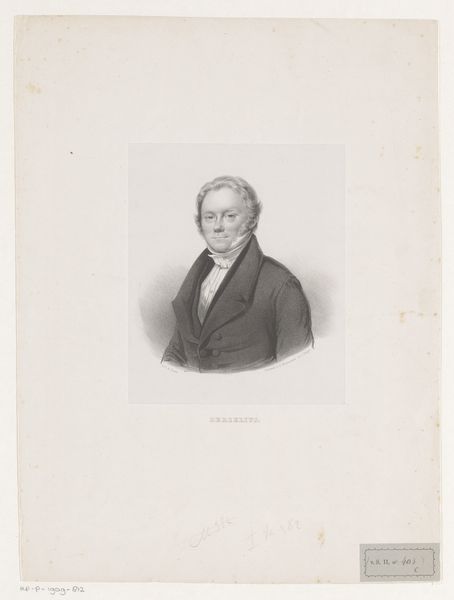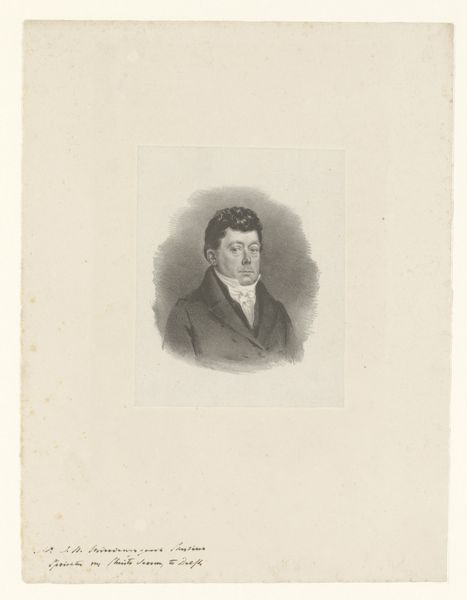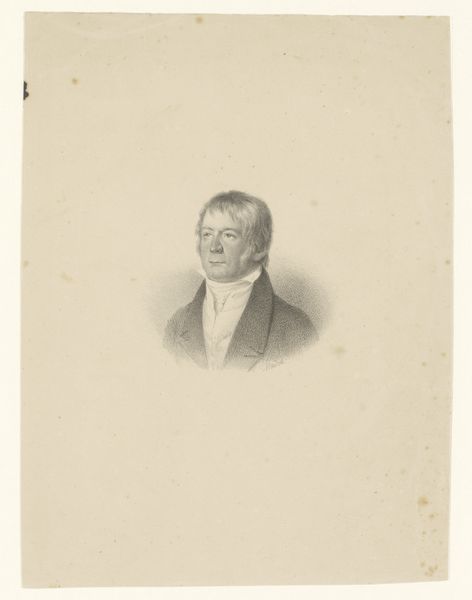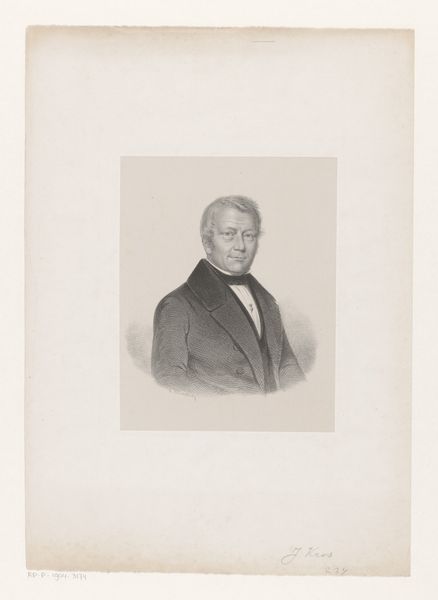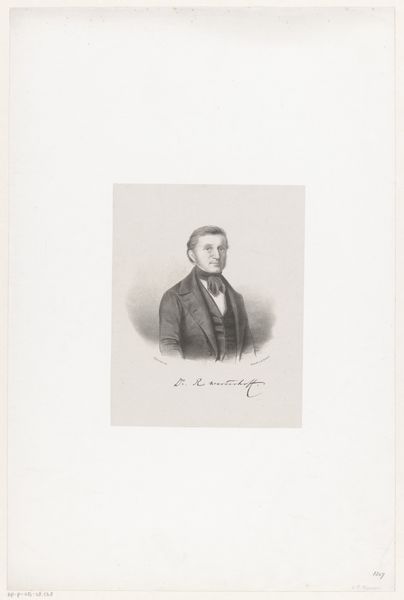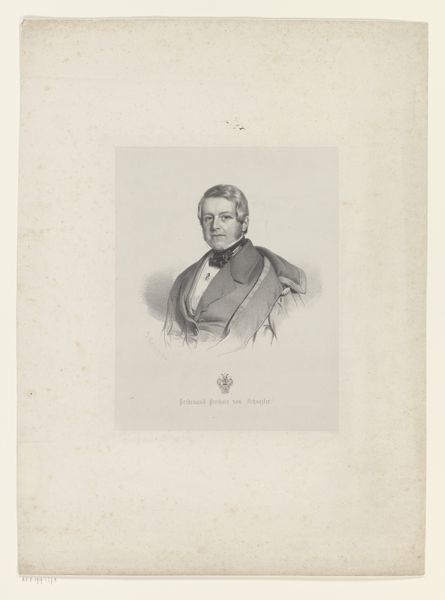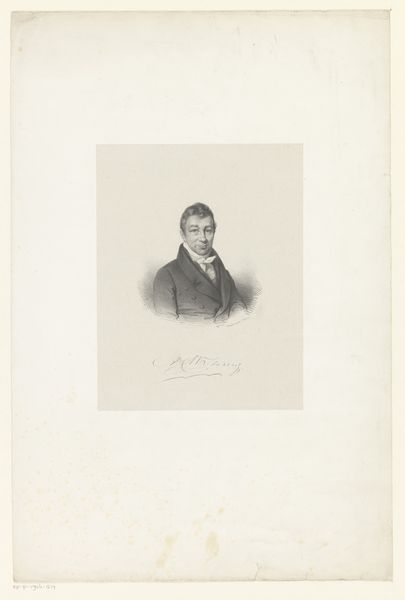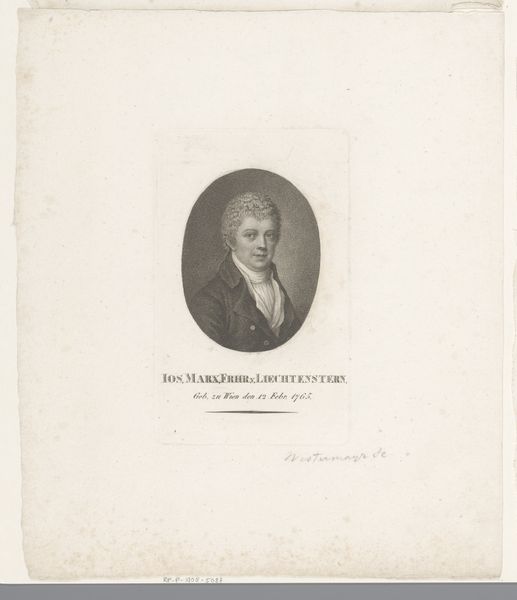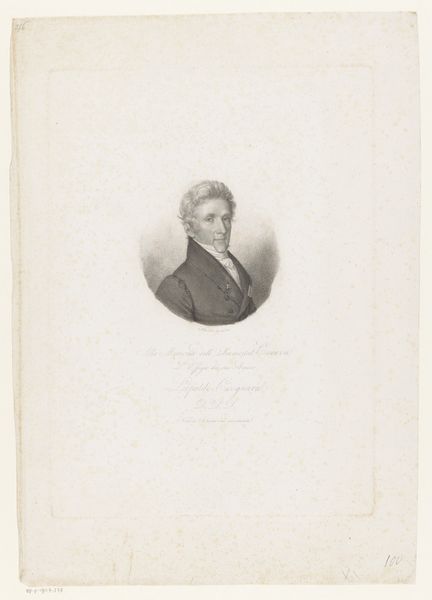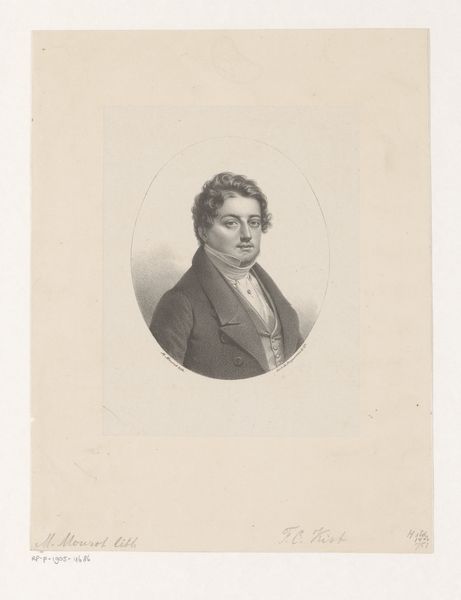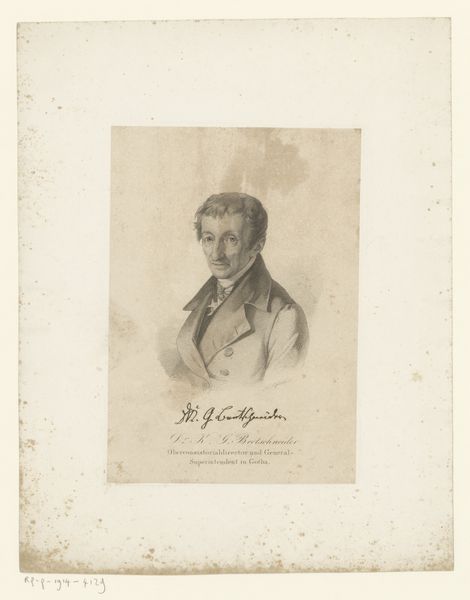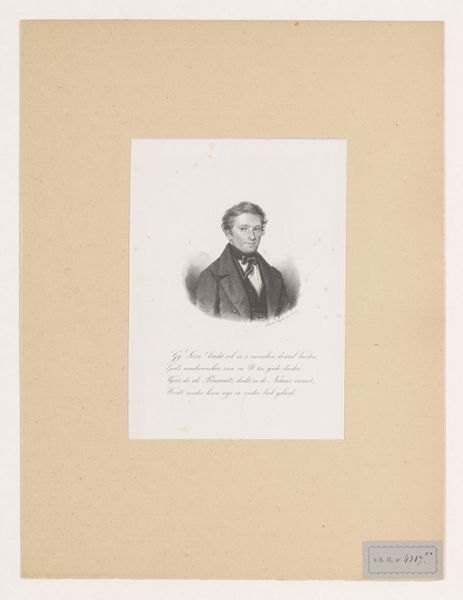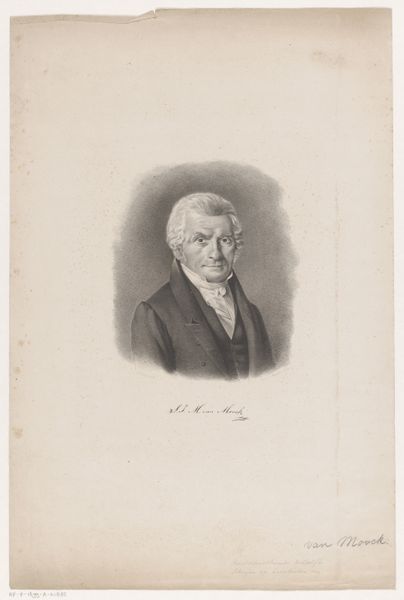
print, engraving
#
portrait
# print
#
historical photography
#
romanticism
#
history-painting
#
engraving
#
realism
Dimensions: height 225 mm, width 145 mm, height 350 mm, width 295 mm
Copyright: Rijks Museum: Open Domain
This is a portrait of Philippus Pieter Roorda van Eysinga, made by Pieter Wilhelmus van de Weijer, though the precise date is unknown. It is made using a technique called lithography, a printmaking process using a flat stone or metal plate. The magic of lithography lies in its reliance on the repellent properties of oil and water. The artist draws an image on the surface with a greasy crayon or ink. The stone is then treated with a chemical etch, making the untouched areas receptive to water, and the drawn areas receptive to oil-based inks. The surface is dampened with water, which the ink repels, and then rolled with an oily ink, which adheres only to the drawn image. This process allows for the reproduction of detailed drawings. Lithography emerged in the 19th century as an accessible means of mass communication, connecting art with the burgeoning industrial age. It democratized image-making, creating new avenues for commercial and artistic expression beyond traditional painting or engraving. Appreciating the material and process involved allows us to look beyond the image of the man, and toward the democratizing potential of the medium itself.
Comments
No comments
Be the first to comment and join the conversation on the ultimate creative platform.
